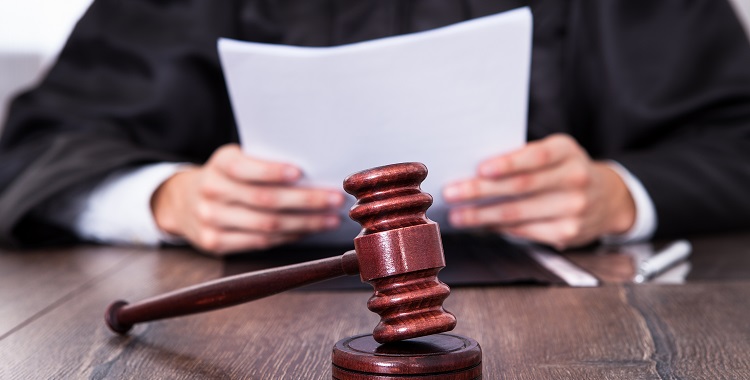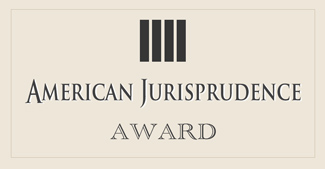
The arraignment takes place in court before a criminal judge or magistrate. At the arraignment, the defendant will be presented with the charging documents, will enter a plea of guilty or not guilty, and bail will be set. Under the Sixth Amendment to the United States Constitution, the arraignment must come soon after a person is arrested. Typically, arraignments must occur within 72 hours of an arrest. If the arraignment takes much longer than this, a defendant can argue that their constitutional right to a “speedy trial” under the Sixth Amendment has been violated.
What an Arraignment is NOT
- It is NOT a trial
- No witnesses will be called
- Guilt or innocence will NOT be determined
What Happens at an Arraignment?
Arraignments are usually a quick process, lasting less than 10 minutes overall. Because local court rules differ, the exact process for an arraignment may be different depending on the court. The rules governing the arraignment process also differ between state and federal court. However, generally speaking, the process entails the following seven aspects:
- The case is called. The arraignment begins when the case is announced by the court’s bailiff or other court officer calling out the case number and the name of the defendant.
- The defendant goes before the judge. After the case is called, the defendant is walked to a podium before the judge. At this point, if the defendant already has a defense attorney, they will join the defendant at the podium. The prosecutor will also be standing before the judge. The first thing the defense attorney normally does is “waive the reading” of the charges.
- Waiver of the reading. Every criminal defendant in Utah has a right to have the judge read the charges against them in open court. However, this reading isn’t necessary. In the vast majority of cases, the defendant waives this right and chooses to review the charges in writing at a different time with their attorney. This is a courtesy that saves the judge time and allows the proceeding to go quicker. Moreover, this prevents the judge from reading the full charges aloud to the entire courtroom, which many defendants prefer anyway.
- Statement by the prosecutor. After the waiver of the reading, the judge will often ask the prosecutor to give a short synopsis of the case against the defendant. Judges hear many matters each day, so this gives the judge some background information about the case.
- The defendant enters a plea. The major function of the arraignment is for the defendant to enter a plea. Almost always, it is best for defendants to plead “not guilty” at this time. Doing so merely tells the court that you would like to preserve your right to be presumed innocent until proven guilty. Pleading not guilty also preserves a defendant’s ability to negotiate lesser charges with the prosecution. In rare cases, a plea of “guilty” may be appropriate, but this should only be entered after a defendant has discussed their case with an attorney. There are two other pleas that are possible in Utah at the judge’s discretion; however, these are rarely made at the arraignment. A “no contest” plea has the same procedural effect as a guilty plea (ie. conviction), but is not admissions of guilt by the defendant. Similarly, an “Alford plea” allows a defendant to take a plea deal (agree to be convicted of a lesser charge) without admitting any guilt.
- Pretrial hearing and trial dates are set. Assuming the defendant pleads “not guilty,” the judge will next schedule pretrial hearing dates and in many cases a tentative trial date. This scheduling often requires some back and forth between the prosecution, the judge, and the defense attorney to find dates that work well for all involved.
- Bail is discussed. Next, the judge will decide whether the defendant will have a bail set. Under the United States constitution, bail is not to be used as a punishment against the defendant, who at this stage is legally presumed innocent. Instead, the primary purpose of bail is to ensure that the defendant is present in court for their trial and other hearings. There are a number of factors that the judge will consider when determining what the appropriate amount of bail is, including the nature of the offense, the likelihood that the defendant will attempt to flee, and the defendant’s level of wealth. The prosecutor and defense attorney will often go back and forth trying to convince the judge of the bail amount they feel is justified. If a bail judgment is too high for a defendant to afford to pay, the defense attorney can usually get a new hearing scheduled so that the bail can be lowered after the defendant offers the court proof that they can’t pay such a high amount. In some cases, the judge may not set any bail at all. If the judge decides that the defendant does not need to have a bail, the judge will release the defendant on their own recognizance.
Contact an Arraignment Attorney in Salt Lake City at the Wasatch Defense Lawyers
If you are facing a criminal arraignment in Utah, having an attorney present to represent you can make a huge difference. An experienced criminal defense attorney can make sure you don’t lose any procedural rights, that you enter the best possible plea, and can fight on your behalf when bail is determined by the judge. Trying to get through an arraignment without an attorney is a risk.
At Wasatch Defense Lawyers, we are dedicated to getting the best possible outcome for their clients around Salt Lake City and throughout Utah. We believe in providing our clients with an aggressive and vigorous defense at all stages or a prosecution, including at the arraignment. No matter the type of charges against you, we will fight hard to make sure that your rights are protected, that all possible defenses are asserted, and that you get the best possible outcome. If you would like more information on the arraignment process in Utah or would like to schedule a Free criminal case review, call our award-winning criminal defense lawyers at: (801) 980-9965.



